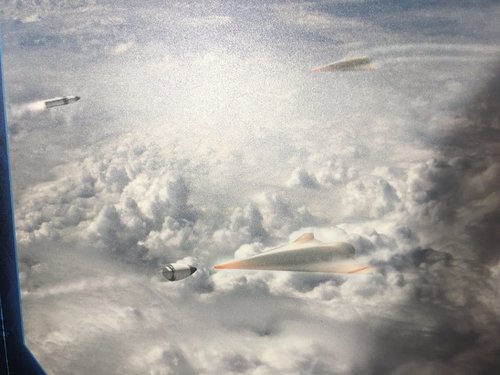- Joined
- 3 June 2011
- Messages
- 17,897
- Reaction score
- 10,978
Just starting a generic thread here to discuss possibilities and programs. Saw the following in an AvWeek article:
"These include a new family of interceptor missiles called SkyFire proposed by Raytheon; hypervelocity projectiles designed by General Atomics, Boeing and BAE Systems; a laser gun offered by Boeing; and electronic attack systems conceptualized by Northrop Grumman, L3 Technologies and Lockheed. Lockheed also has proposed a full range of new interceptors, including a space-based system, an air-launched missile and the “Valkyrie” for terminal hypersonic defense. "
http://aviationweek.com/defense/top-us-hypersonic-weapon-program-facing-new-schedule-pressure#comment-1090641
Anybody know anything about these?
"These include a new family of interceptor missiles called SkyFire proposed by Raytheon; hypervelocity projectiles designed by General Atomics, Boeing and BAE Systems; a laser gun offered by Boeing; and electronic attack systems conceptualized by Northrop Grumman, L3 Technologies and Lockheed. Lockheed also has proposed a full range of new interceptors, including a space-based system, an air-launched missile and the “Valkyrie” for terminal hypersonic defense. "
http://aviationweek.com/defense/top-us-hypersonic-weapon-program-facing-new-schedule-pressure#comment-1090641
Anybody know anything about these?






